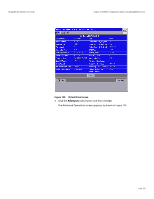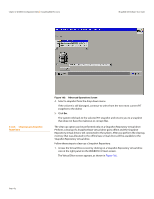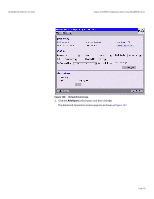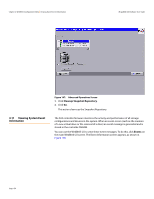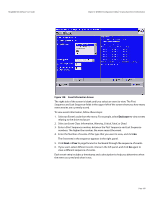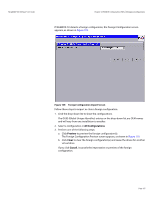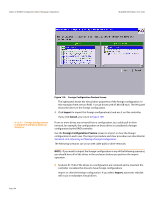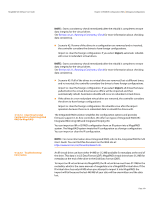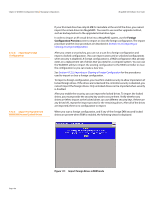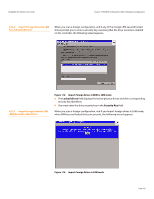Lenovo ThinkServer RD330 MegaRAID SAS Software User Guide - Page 156
Managing Configurations
 |
View all Lenovo ThinkServer RD330 manuals
Add to My Manuals
Save this manual to your list of manuals |
Page 156 highlights
Chapter 4: WebBIOS Configuration Utility | Managing Configurations MegaRAID SAS Software User Guide 4.12 Managing Configurations 4.12.1 Running a Consistency Check 4.12.2 Deleting a Virtual Drive This section includes information about maintaining and managing storage configurations. You should periodically run a consistency check on fault-tolerant virtual drives. A consistency check verifies that the redundancy data is correct and available for RAID 1, RAID 5, RAID 6, RAID 10, RAID 50, and RAID 60 drive groups. To do this, follow these steps: 1. On the main WebBIOS CU screen, select a virtual drive. 2. Click Virtual Drives. 3. When the Virtual Drive screen appears, select CC in the lower left panel, and click Go. The consistency check begins. If the WebBIOS CU finds a difference between the data and the parity value on the redundant drive group, it assumes that the data is accurate and automatically corrects the parity value. Be sure to back up the data before running a consistency check if you think the data might be corrupted. You can delete any virtual drive on the controller if you want to reuse that space for a new virtual drive. The WebBIOS CU provides a list of configurable drive groups where there is a space to configure. If multiple virtual drives are defined on a single drive group, you can delete a virtual drive without deleting the whole drive group. CAUTION: Back up any data that you want to keep before you delete the virtual drive. 4.12.3 Importing or Clearing a Foreign Configuration To delete a virtual drive, follow these steps. 1. Access the Virtual Drive screen by clicking on a virtual drive icon in the right panel on the WebBIOS CU main screen. The Virtual Drive screen appears. 2. Select Delete in the bottom panel under the heading Operations, and click Go. 3. When the message appears, confirm that you want to delete the virtual drive. A foreign configuration is a storage configuration that already exists on a replacement set of drives that you install in a computer system. In addition, if one or more drives are removed from a configuration, by a cable pull or drive removal, for example, the configuration on those drives is considered a foreign configuration by the RAID controller. The BIOS CU allows you to import the foreign configuration to the RAID controller, or to clear the configuration so you can create a new configuration using these drives. NOTE: When you create a new configuration, the WebBIOS CU shows only the unconfigured drives. Drives that have existing configurations, including foreign configurations, will not appear. To use drives with existing configurations, you must first clear the configuration on those drives. Page 156



